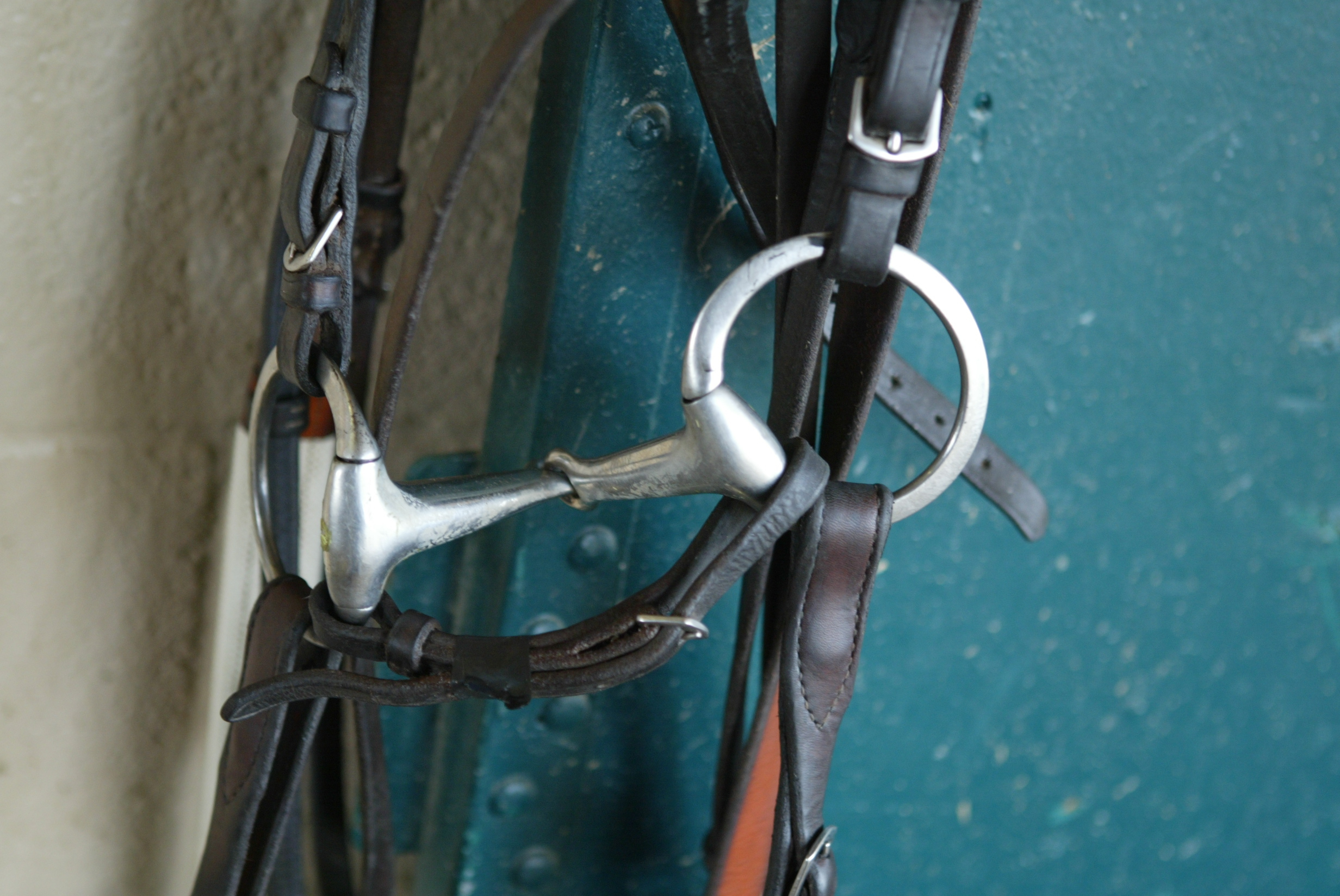Ride & Guide - our guide to what horses can run in
/By Annie Lambert
Bits and related training accessories are not all they depend on, however. The talented exercise riders they hire represent the hands using those bits, an important factor in the process.
Whatever bits and riggings a trainer prefers, they have a logical reason as to why their choices work within their program. A lot of that reasoning is chalked up to trial and error experiences.
Bit Bias
Some bits are legal for training and racing while others are not allowed in the afternoons. The most recognizable of the morning-only headgear would be the hackamore. Using a hackamore requires approval from officials.
California trainer Danny Hendricks’ father and uncle, Lee and Byron Hendricks respectfully, toured the rodeo circuit with specialty acts, trick riding and Roman jumping over automobiles. They were superior horsemen that began retraining incorrigible racehorses. The brothers introduced many bits that race trackers had not yet explored. Danny was too young to remember those bits, but did inherit the Hendricks’ talent.
“I had a filly for Dick [Richard Mandella] way back that wouldn’t take a bit, she’d just over flex,” he explained. “If you just touched her she’d put her nose to her chest and go straight back. I put a halter on her with a chifney, so it just hung there, put reins on the halter and started galloping her. It took months before she’d finally take that bit.”
The fat, egg butt snaffle is popular with many trainers as is the standard ring bit
The majority of trainers shrug off which bits are not allowed in the afternoons as they are not devices they’d think of using anyway. In fact, most trainers never ponder “illegal” bits.
Based in Southern California, Hall of Famer Richard Mandella personally feels it’s easy to make too much out of bits. He prefers to keep it simple where possible and to change bits occasionally, “so you put pressure on a different part of the mouth.”
“I don’t want to hear a horse has to have a D bit every day or a ring bit every day,” Mandella offered. Adding with a chuckle, “It’s good to change what you’re doing to their mouth, which usually isn’t good with race horses.”
Mandella learned a lot from a Vaquero horseman, Jimmy Flores, a successful stock horse trainer. His father was shoeing horses for Flores, who encouraged Mandella, then eight or nine years old, to hack his show horses around.
“Jimmy would put a hackamore on them, to get the bit out of their mouth,” Mandella recalled. “He said to me once, ‘You don’t keep your foot on the brake of your car, you’ll wear the brakes out.’ He was a great horseman.”
Trainer Michael Stidham introduced Mandella to the Houghton bit, which originally came from the harness horse industry.
“The Houghton has little extensions on the sides and it is like power steering,” Mandella said. “As severe as it looks, it’s not hard to ride. We’ve had a lot of luck with horses getting in or out, it corrects them.”
David Hofmans, a multiple graded stakes winning trainer, did not come from a horse background. He fell in love with the business when introduced to the backside by Gary Jones and went to work for Jones’ father, Farrell, shortly after.
One of many well-used tack combinations is a figure 8 over the rubber-mouthed ring bit
“We’re always trying something different if there is a problem,” Hofmans said of his tack options. “I use the same variety of ring bits and D bits with most of our horses. We use a martingale, noseband and sometimes a shadow roll. If you have a problem you try something different, but if everything is okay, you stick with what works.”
Michael McCarthy spent many years working for Todd Pletcher before moving his base to California. When it comes to bits, he hasn’t varied much from his former boss. McCarthy reminded, “When the horses are comfortable, the riders are more relaxed and everybody gets along better.”
“Most horses here just wear a plain old, thick D bit,” he said from his barn at California’s Del Mar meet. “Some of the horses get a little bit more aggressive in the morning, so they wear a rubber ring bit. In the afternoons, if we have one that has a tendency to pull, we may put a ring bit with no prongs.”
McCarthy discovered the Houghton bit in Pletcher’s where they used it on Cowboy Cal, winner of the 2009 Strub Stakes at Santa Anita. He uses the Houghton sparingly to help horses steer proficiently.
Louisiana horseman Eric Guillot said from his Saratoga office that he uses whatever bit a horse needs – a lot of different equipment combinations.
“I use a D bit with a figure 8 and, when I need to steer them, a ring bit with figure 8 or sometimes I use a ring bit with no noseband at all,” he offered. “Sometimes I use a cage bit and I might use a brush [bit burr] when a horse gets in and out. Really, every situation requires a different kind of bit.”
TO READ MORE —
BUY THIS ISSUE IN PRINT OR DOWNLOAD -
Breeders’ Cup 2018, issue 50 (PRINT)
$6.95
Pre Breeders’ Cup 2018, issue 50 (DOWNLOAD)
$3.99
WHY NOT SUBSCRIBE?
DON'T MISS OUT AND SUBSCRIBE TO RECEIVE THE NEXT FOUR ISSUES!
Print & Online Subscription
$24.95



